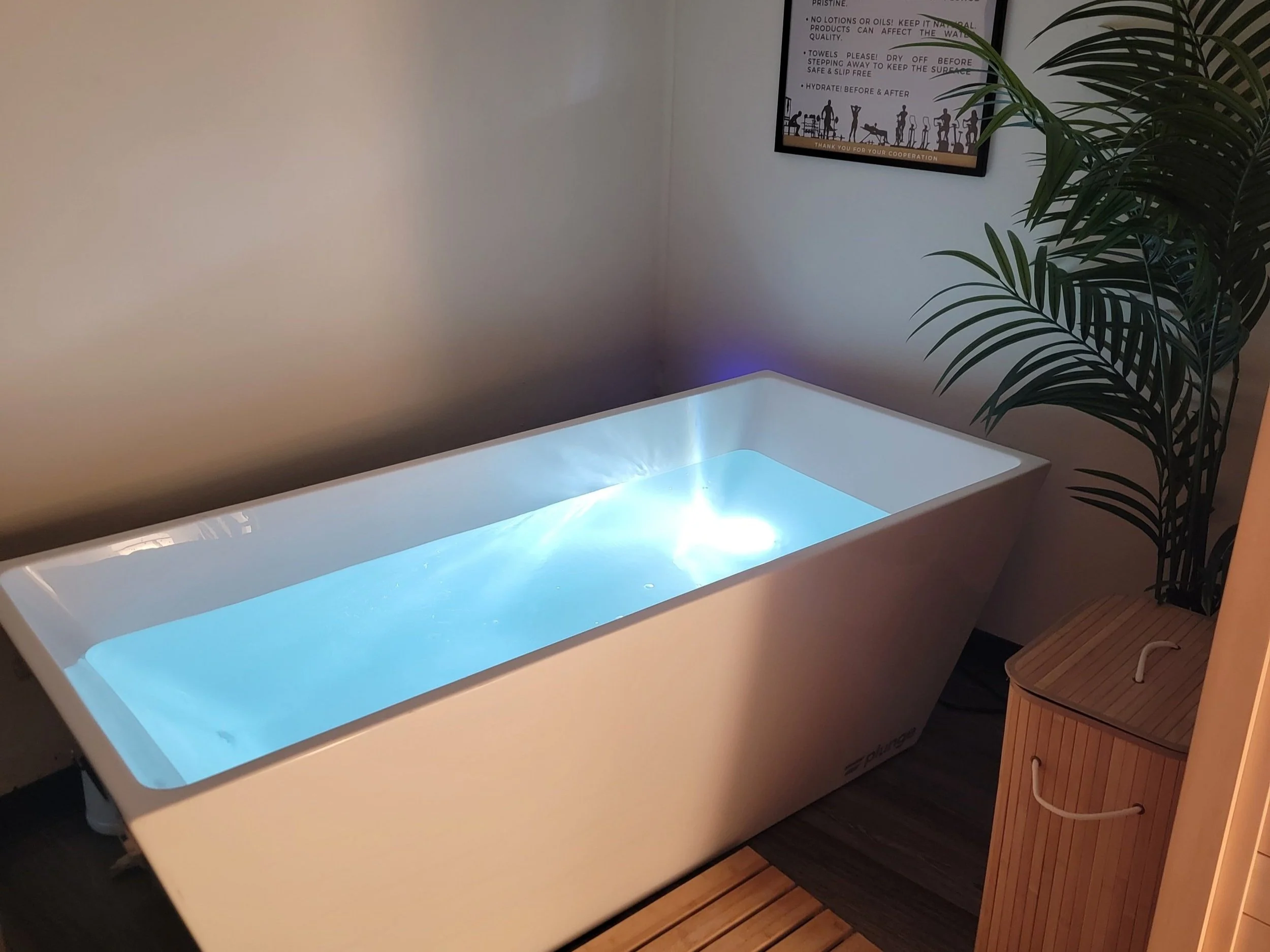Dive into wellness: the invigorating benefits of cold plunging
In the realm of wellness trends, one practice is making waves – quite literally – with its surprising health advantages: cold plunging, also known as cold water immersion or ice bathing. The idea of plunging into icy waters might seem daunting at first, but a growing body of evidence suggests that embracing the chill can unlock a wealth of physical and mental health benefits.
What is a cold plunge?
A cold plunge involves submerging your body, either partially or fully, into cold water for a short period of time. The water temperature typically ranges from 50 to 60 degrees Fahrenheit, or even colder for experienced plungers. This exposure triggers a unique physiological response in your body, leading to a cascade of benefits.
The health benefits of cold plunging
Here's a glimpse into the myriad ways cold plunging can improve your well-being:
Muscle recovery and reduced inflammation: For athletes and fitness enthusiasts, cold plunges offer a powerful tool for post-workout recovery. Cold water helps reduce inflammation by constricting blood vessels, limiting the spread of swelling and promoting faster healing. It can also alleviate delayed onset muscle soreness (DOMS), allowing you to bounce back faster for your next workout.
Improved circulation: The cold immersion causes blood vessels to constrict, followed by dilation upon exiting the water. This process boosts circulation, delivering oxygen and nutrients more efficiently throughout the body and aiding in detoxification.
Enhanced mood and mental clarity: The initial shock of cold water triggers a release of endorphins, often called the "feel-good" hormones, leading to a surge of positive emotions. Cold exposure can also increase levels of norepinephrine and dopamine, neurotransmitters associated with improved focus, attention, and mood.
Boosted immune function: Some research suggests that regular cold water exposure can stimulate the immune system, potentially leading to increased white blood cell count and better resistance to illness. One study even showed a 29% reduction in sick days among individuals who regularly took cold showers.
Increased resilience and stress management: Voluntarily exposing yourself to the stress of cold water can help train your body and mind to respond more effectively to other stressors in everyday life. The ability to remain calm and regulate breathing in the face of the cold shock can translate into improved emotional regulation and resilience.
Accelerated metabolism and potential weight management: Cold plunging can activate brown fat, a type of healthy fat that helps regulate body temperature and burn calories. While not a magic bullet, it can be a complementary tool for weight management alongside a healthy diet and exercise.
Improved sleep quality: Cold water immersion may promote better sleep by helping to regulate body temperature and calming the nervous system.
Potential pain relief: Cold water immersion can reduce nerve activity, which may help alleviate chronic pain and inflammation.
Tips for safe cold plunging
While the benefits are enticing, it's crucial to approach cold plunging safely, especially if you are new to the practice:
Consult your doctor: Before taking the plunge, especially if you have pre-existing health conditions like heart problems, high blood pressure, or diabetes, consult with your doctor.
Start slowly: Begin with shorter sessions, around 1-2 minutes, at a slightly warmer temperature (around 55-60°F).
Gradually increase duration and lower temperature: As you build tolerance, slowly increase your time in the water and gradually decrease the temperature, but avoid pushing it to extremes too quickly.
Listen to your body: Pay close attention to how you feel during and after the plunge. If you experience dizziness, numbness, or uncontrollable shivering, exit the water immediately.
Don't plunge alone: Have someone nearby for support and assistance, particularly during your initial sessions.
Warm up gradually: After the plunge, dry off and dress warmly. Avoid using hot tubs or saunas immediately after, allowing your body to rewarm naturally.
Remember: Cold plunging is a tool in your wellness toolbox, not a replacement for a healthy lifestyle. Combine it with regular exercise, a balanced diet, proper hydration, and adequate sleep for optimal benefits. If you're looking for an invigorating way to boost your overall health and well-being, cold plunging might be worth exploring, but always prioritize safety and listen to your body.


